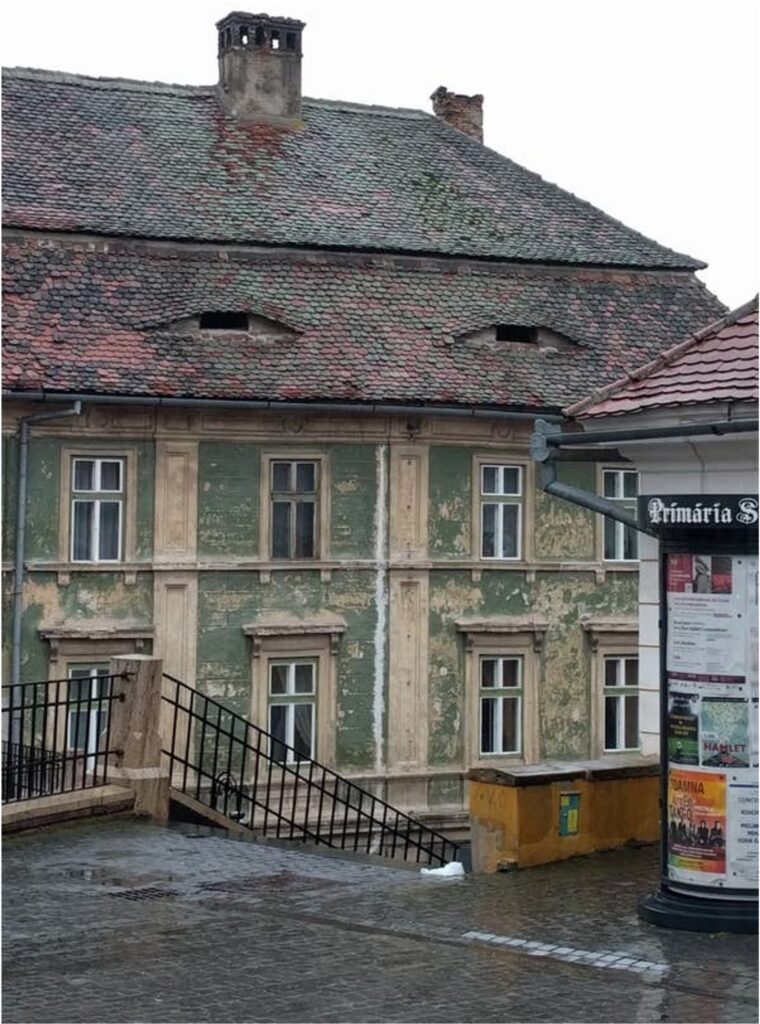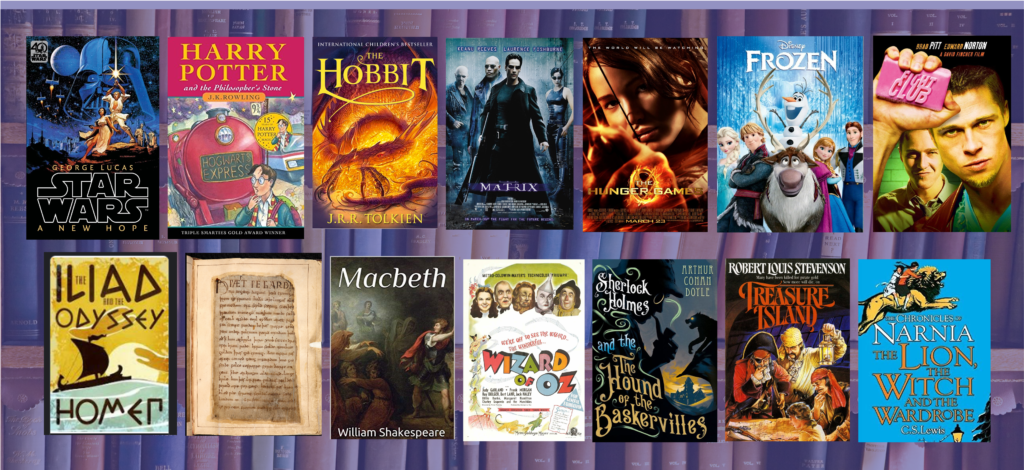The clock is ticking. You sit at your desk, the deadline looming like a storm cloud. This isn’t just any bid—it’s the one. The must-win opportunity that could secure your company’s future. But the stakes are higher than ever. Whispers of the competition’s strategy are circulating, and they’ve brought in reinforcements: AI-powered systems designed to craft flawless proposals—cold, clinical precision. Perfect formatting. Insightful analytics were generated in seconds.
You glance at your draft. It’s solid, thorough, and compliant—but is it enough? You know better than to rely on technical merit alone. A bid, after all, isn’t just a checklist of requirements; it’s a persuasive document. To win, it must appeal not only to your customer’s intellect but also to their emotions. It must resonate with their unspoken desires, challenges, and goals. It must tell a story so compelling they can’t imagine choosing anyone else.
You lean back, the pressure mounting. How can you compete with machines that can crunch data faster, craft precise answers, and even anticipate evaluators’ preferences? The answer isn’t in outdoing AI at what it does best—it’s in doing what AI cannot—telling a human story. Connecting on a level that algorithms can’t reach.
This article is your guide. It will show you how to harness storytelling’s ancient, influential art to transform your bids. You’ll learn how to weave psychological principles into your proposals, create narratives that stick, and outmanoeuvre even the most advanced AI. Read on and discover how to turn your next bid into an unforgettable and winning story.
Why Storytelling is the Human Advantage in Bids
Your competitors may have AI, but you have something far more powerful: the ability to tell a story that resonates deeply with decision-makers. Unlike data-driven algorithms, storytelling taps into the very fabric of human cognition. It transforms technical content into a meaningful journey that evaluators can understand, remember, and champion.
Storytelling in bids works because it aligns with how the human brain is wired to process information. It’s about delivering facts and giving them context, emotion, and purpose. By embedding your solution within a narrative, you move beyond compliance and technical merit to create a proposal that connects emotionally and intellectually.
Why does this matter? Humans are emotional beings who make decisions influenced by stories. As much as we’d like to think decisions are purely logical, they are often shaped by how well something feels. A proposal without a story risks being forgotten amidst a sea of similar bids. A proposal with a story stands out, remembered not just for its content but also for the way it made evaluators feel.
Humans are emotional beings who make decisions influenced by stories.
In this section, we’ll explore why humans are wired for storytelling and how you can use this natural advantage to elevate your proposals above the competition—even AI-powered ones. Understanding the evolutionary roots of storytelling and its psychological impact is the first step in creating bids that meet the mark and win the contract.
The Evolutionary Roots of Storytelling: Why It Works
Long before spreadsheets and algorithms, storytelling was humanity’s most powerful tool. For early humans, stories were essential for survival. They warned of dangers, identified resources, and fostered group cohesion. Storytelling wasn’t just entertainment but a means to navigate a chaotic and unpredictable world.
This evolutionary legacy persists today. Our brains are wired to seek meaning through narrative. We crave coherence and pattern, especially when faced with complexity. A well-told story provides clarity, turning abstract concepts into tangible ideas. In bids, this means framing your solution as part of a more extensive journey that aligns with the client’s goals and aspirations.
1. Storytelling as Survival
Imagine early humans sitting around a fire. One recounts a story of a nearby predator, detailing its behaviour and how to avoid it. Another shares knowledge about an abundant food source. Rich with context and meaning, these narratives helped the group survive and thrive. Fast forward to today, and our brains still respond to stories similarly. They make sense of the unknown, provide a framework for decision-making, and create emotional connections.

Storytelling plays a similar role in a bid. It helps evaluators navigate the complexities of competing solutions. It positions your proposal not just as an answer to their problem but as the solution that will lead them to success.
2. The Pareidolia Effect
Humans are natural pattern-seekers. Pareidolia, seeing faces in clouds or shapes in random objects, reflects our brain’s need to impose order on chaos. This tendency extends to how we process information in proposals. A narrative structure in a bid satisfies this craving for order, making your solution more accessible to understand and more compelling to evaluators.






When your bid tells a story—beginning with the client’s challenges and ending with their success—it aligns with this innate preference. It provides evaluators with a framework to grasp the value of your solution, ensuring it stands out amidst competing bids.
3. Lessons from the Heider and Simmel Experiment
In 1944, psychologists Fritz Heider and Marianne Simmel conducted a groundbreaking study. They showed participants a short animation featuring simple geometric shapes moving across a screen. Without prompting, participants created elaborate stories about the shapes’ actions and motivations—a triangle protecting a circle, a square acting aggressively.
The takeaway? Humans instinctively create narratives, even when none exist. In bids, this underscores the power of storytelling. Without a narrative, evaluators may create their interpretations of your proposal—ones that might not favour you. By crafting a clear and compelling story, you guide their understanding and ensure your message lands as intended.
The Neuroscience of Storytelling: Why Stories Stick
Stories don’t just entertain; they physically and chemically alter the way we think and feel. Neuroscience reveals that storytelling activates multiple areas of the brain, engaging listeners on a deeper level than facts and data ever could. When you craft a narrative in a bid, you aren’t just presenting a solution—you’re creating an experience. This section explores how storytelling affects the brain, making your proposals more persuasive, memorable, and emotionally engaging.
1. Neural Coupling: Aligning Minds
When someone listens to a story, their brain activity mirrors that of the storyteller—a phenomenon known as neural coupling. This synchronisation creates a shared mental model, fostering understanding and connection.
In a bid, storytelling helps evaluators step into your narrative. They begin to visualise your solution not as abstract concepts but as a tangible part of their future success. Neural coupling makes your proposal feel relatable, aligning their thoughts with your vision.
2. Emotional Chemistry: Dopamine, Oxytocin, and Cortisol
Stories engage the brain’s emotional and chemical pathways, making them powerful tools of influence. Key neurochemicals activated by storytelling include:
- Dopamine: Released during moments of pleasure or resolution, dopamine enhances focus and memory retention. In a bid, highlighting the client’s journey from problem to success ensures your solution is remembered long after others are forgotten.
- Oxytocin: Often called the “trust hormone” oxytocin is released when we feel empathy. A story that centres on the client’s challenges and aspirations builds a connection, fostering trust in your organisation.
- Cortisol: Released during moments of tension, cortisol heightens attention and focus. Introducing conflict or challenges in your narrative captures evaluators’ attention, keeping them engaged throughout your proposal.
By weaving these emotional triggers into your bid, you create a narrative that is not only compelling but also physiologically memorable.
3. The Default Mode Network: Simulating Success
The brain’s default mode network (DMN) activates when we hear stories, allowing us to simulate scenarios, imagine possibilities, and empathise with characters. For evaluators, a narrative-driven bid becomes a mental rehearsal of how your solution will play out in their organisation.
This simulation reduces perceived risks and builds confidence in your proposal. When evaluators can see themselves in your story, they are more likely to trust and advocate for your solution.
4. Why Stories Beat Data
While data appeals to logic, stories appeal to the whole brain—engaging both rational and emotional centres. Evaluators may forget a technical specification, but they will remember how your narrative made them feel. This emotional resonance is what makes storytelling an unbeatable tool, even against AI-generated bids.
Storytelling doesn’t just convey information—it creates connection, builds trust, and leaves a lasting impression. In the next section, we’ll explore how to apply storytelling frameworks like the Hero’s Journey to craft bid narratives that captivate evaluators and position your solution as the transformative choice.
The Hero’s Journey: Structuring a Winning Narrative
The Hero’s Journey, as outlined by Joseph Campbell in The Hero with a Thousand Faces (1949) and adapted by Christopher Vogler in The Writer’s Journey (1992), is a universal storytelling framework that maps the journey of transformation. It consists of three major acts—Departure, Initiation, and Return—with specific stages that reflect the human experience of growth and change.

When applied to bids and proposals, this framework positions the client as the hero and your organisation as the mentor guiding them through challenges to achieve success. This narrative structure taps into evaluators’ emotional and psychological patterns, making your bid more compelling and memorable.
The Structure of the Hero’s Journey
- The Ordinary World: The hero’s starting point—a comfortable, familiar environment that masks underlying challenges or opportunities.
- The Call to Adventure: A disruption or challenge prompts the hero to take action.
- Meeting the Mentor: A guide or expert offers tools, advice, or encouragement to prepare the hero for the journey ahead.
- Crossing the Threshold: The hero commits to the journey, leaving the familiar behind.
- Trials and Allies: The hero faces obstacles and builds relationships that test and strengthen them.
- The Transformation: The hero evolves, gaining new insights, skills, or perspectives.
- Return with the Elixir: The hero returns to their world, bringing the knowledge or solution that resolves the initial challenge.
Applying the Hero’s Journey: The Example of Barbie
Greta Gerwig’s Barbie (2023) demonstrates how the Hero’s Journey framework can be used to craft an engaging narrative, even in unexpected contexts. Here’s how the film aligns with the structure:
- The Ordinary World: Barbie begins in Barbieland, a seemingly perfect, utopian world where every day is joyful and predictable. This reflects the client’s starting position in a bid—the status quo, where everything appears to be working but underlying challenges may exist.
- The Call to Adventure: Barbie begins experiencing disruptions in her perfect life, such as flat feet and existential thoughts. These anomalies force her to confront a larger reality. In a bid, this is the moment when the client realises their current processes or systems are insufficient to meet new challenges.
- Meeting the Mentor: Barbie seeks guidance from “Weird Barbie,” who explains that she must venture into the Real World to uncover the source of her problems. Similarly, your organisation acts as the mentor in a proposal, offering expertise and tools to help the client navigate their challenges.
- Crossing the Threshold: Barbie leaves the comfort of Barbieland and enters the Real World, a place of uncertainty and complexity. In a bid, this is the stage where the client steps away from familiar solutions and considers your proposed approach.
- Trials and Allies: In the Real World, Barbie encounters resistance and confusion while also learning valuable lessons about identity, relationships, and the human condition. For clients, this stage reflects the challenges they face during solution implementation and the allies they rely on—your team—to overcome them.
- The Transformation: Barbie undergoes a profound transformation, moving beyond her initial role and understanding her true purpose. In proposals, this is where you show how your solution empowers the client, fundamentally changing their capabilities or outcomes.
- Return with the Elixir: Barbie returns to Barbieland with a new sense of self and purpose, inspiring others with her newfound wisdom. For a client, this represents the realisation of long-term benefits from your solution—greater efficiency, growth, or success that ensures their ongoing triumph.
By framing your proposal through the Hero’s Journey, you invite evaluators into a narrative where they are the protagonist, and your organisation is the essential guide. This structure not only makes your bid more engaging but also demonstrates how your solution aligns with their goals and aspirations, leaving a lasting impression. In the next section, we’ll explore practical techniques for integrating storytelling into your proposals.
Practical Techniques for Integrating Storytelling into Bids
Crafting a narrative-driven proposal requires more than simply weaving words—it involves strategic planning and deliberate execution to ensure your story aligns with the client’s needs and aspirations. Here are actionable techniques to bring storytelling to life in your bids, transforming them from technical documents into persuasive, memorable narratives.
1. Case Studies as Mini-Stories
Case studies are one of the most natural ways to incorporate storytelling into a bid. They allow you to demonstrate the tangible benefits of your solution through real-world examples. To craft an engaging case study, structure it as a narrative:
- The Hero’s Challenge: Start with the client’s initial problem or opportunity. Highlight the stakes to make the scenario relatable.
- The Mentor’s Solution: Describe how your organisation stepped in to guide them, offering the tools, expertise, or strategy they needed.
- The Transformation: Show the measurable results and lasting impact of your intervention. Use specific data to substantiate the success, but frame it as the conclusion to their journey.
Example: Instead of writing, “We reduced downtime by 30% for Client X,” you might say, “Client X faced a critical operational bottleneck that risked losing them millions annually. With our tailored solution, they not only overcame the issue but transformed their operations, achieving a 30% reduction in downtime and a 20% boost in productivity.”
2. Use Contrast to Create Engagement
Nancy Duarte’s concept of “contrast” in Resonate is a powerful tool for storytelling. In your bids, contrast can highlight the transformative impact of your solution by juxtaposing the “before” and “after” states:
- Before: The client’s challenges, inefficiencies, or risks without your solution.
- After: The improved state achieved through your solution—greater efficiency, reduced costs, enhanced capabilities, or long-term success.
Example: Use visuals such as a side-by-side comparison table or a timeline to illustrate the shift from the problem to the solution. These contrasts not only emphasise the value of your offering but also make the story visually impactful.
3. Visual Storytelling
A picture is worth a thousand words, especially in a bid. Visual elements can complement your narrative, making complex concepts easier to understand and remember. Consider these approaches:
- Infographics: Summarise key points or data in a visually appealing way that reinforces your story.
- Timelines: Show the client’s journey from their current state to future success with your solution.
- Diagrams: Illustrate processes, workflows, or systems to provide clarity and context.
Tip: Align visuals with the narrative arc of your proposal, guiding evaluators through the story in a seamless, engaging way.
4. Appeal to Emotion Through Language
While bids often focus on logic and technical accuracy, don’t underestimate the power of emotion. Use language that evokes empathy, trust, and excitement about the possibilities your solution offers. For example:
- Focus on “you”: Centre the narrative around the client’s needs and outcomes rather than your organisation’s capabilities. Replace “We are industry leaders in X” with “You will gain access to industry-leading expertise that empowers your team to succeed.”
- Use evocative imagery: Describe outcomes in a way that helps evaluators visualise success. Instead of “reduce costs,” say “free up resources to reinvest in innovation.”
5. Tailor the Narrative to the Client
Every client’s journey is unique, and your story should reflect that. Tailor the narrative to align with their specific challenges, goals, and aspirations:
- Understand their pain points: Research the client’s industry, objectives, and challenges to craft a story that speaks directly to their needs.
- Speak their language: Use terminology and references familiar to the client’s sector to establish credibility and connection.
- Emphasise shared values: Highlight aspects of your solution that align with the client’s culture, vision, or mission.
Example: If the client prioritises sustainability, frame your solution as a journey toward greener, more efficient operations.
6. Create a Cohesive Story Arc
Structure your bid with a clear beginning, middle, and end:
- Beginning: Introduce the client’s challenge (The Call to Adventure) and your role as the mentor.
- Middle: Detail the solution and how it addresses obstacles (Crossing the Threshold and Trials).
- End: Highlight the transformative impact of your solution and its long-term benefits (The Transformation and Return with the Elixir).
Tip: Use the Hero’s Journey framework from the previous section as a guide to ensure your narrative flows naturally and builds momentum.
7. Keep It Simple and Focused
Even the best story can lose impact if it’s bogged down by excessive detail or jargon. Strive for clarity and focus:
- Limit technical jargon: Explain complex terms in simple, relatable language.
- Be concise: Avoid unnecessary tangents or overly detailed explanations that might distract from the main narrative.
- Focus on the client: Ensure every element of the story ties back to their goals and needs.
These storytelling techniques allow you to transform a standard bid into a narrative that captivates evaluators, making your solution stand out. In the next section, we’ll discuss common pitfalls to avoid and how to ensure your storytelling remains impactful and aligned with the client’s expectations.
Common Pitfalls in Storytelling for Bids and How to Avoid Them
While storytelling is a powerful tool, it must be wielded with precision. Missteps can weaken your narrative, confuse evaluators, or even undermine the credibility of your proposal. In this section, we’ll explore common pitfalls in bid storytelling and strategies to avoid them, ensuring your narrative stays impactful, professional, and aligned with the client’s expectations.
1. Overloading with Data
The Pitfall: It’s tempting to include every fact, figure, and statistic to demonstrate your solution’s value. However, overwhelming evaluators with data dilutes the emotional and narrative impact of your story.
How to Avoid It:
- Use data sparingly, focusing on the most impactful metrics.
- Frame data within the narrative, explaining why it matters to the client’s journey. For example, instead of listing, “Reduced operational costs by 30%, improved efficiency by 25%,” say, “Our solution streamlined processes, reducing operational costs by 30%, freeing resources to focus on innovation and growth.”
2. Making the Story About You
The Pitfall: Highlighting your organisation’s accomplishments and capabilities is important, but making the story too self-focused can alienate evaluators. The client doesn’t want to hear about how great you are—they want to see how you’ll solve their problems.
How to Avoid It:
- Position the client as the hero of the story, and your organisation as the mentor.
- Frame your achievements as part of the client’s journey: “With our proven track record in reducing downtime, we’ll help you achieve operational stability and efficiency.”
3. Ignoring the Client’s Perspective
The Pitfall: Crafting a generic narrative that doesn’t address the client’s unique challenges, goals, or values can make your proposal feel impersonal and irrelevant.
How to Avoid It:
- Research the client thoroughly to understand their pain points, objectives, and values.
- Customise the narrative to reflect their specific needs, using language and examples that resonate with their industry and mission.
Example: If the client prioritises sustainability, ensure your narrative emphasises how your solution aligns with their environmental goals.
4. Overcomplicating the Narrative
The Pitfall: Trying to weave an overly complex or abstract story can confuse evaluators, detracting from the clarity and impact of your message.
How to Avoid It:
- Keep the narrative straightforward and focused. Use the Hero’s Journey or similar frameworks to guide the structure.
- Ensure every element of the story ties back to the client’s goals, challenges, and aspirations.
Example: Instead of a convoluted story with multiple arcs, focus on one clear journey: the client’s transformation from their current challenges to future success.
5. Using Jargon and Technical Language
The Pitfall: Excessive use of technical jargon or industry-specific terms can alienate evaluators who may not have deep technical expertise.
How to Avoid It:
- Simplify technical language and explain terms in relatable ways.
- Balance technical details with accessible language that emphasises outcomes and benefits.
Example: Replace, “Our AI model optimises multivariate analysis for predictive maintenance,” with, “Our AI technology helps you anticipate equipment failures, reducing downtime and saving costs.”
6. Neglecting Visual Elements
The Pitfall: A purely text-heavy bid can fail to engage evaluators, making it harder for them to digest key points or stay invested in the narrative.
How to Avoid It:
- Incorporate visuals like graphs, infographics, timelines, and diagrams to complement the narrative.
- Ensure visuals are aligned with the story, reinforcing key points and making complex information more accessible.
7. Forgetting the Emotional Connection
The Pitfall: Focusing solely on logic and data without appealing to emotions can make your bid feel sterile and uninspiring.
How to Avoid It:
- Use language that evokes empathy and excitement.
- Highlight the human impact of your solution—how it improves lives, reduces stress, or fosters growth.
Example: Instead of “We provide 24/7 support,” say, “With 24/7 support, we ensure your team can operate confidently, knowing help is always just a call away.”
8. Lack of a Clear Conclusion
The Pitfall: A strong narrative can fall flat if it lacks a compelling conclusion that ties the story together and inspires confidence.
How to Avoid It:
- End with a clear and inspiring vision of the client’s success, showing how your solution delivers lasting value.
- Use a “Return with the Elixir” approach from the Hero’s Journey, framing your solution as the key to achieving their goals.
By avoiding these common pitfalls, you can craft a narrative that is not only compelling but also aligned with the client’s expectations. In the next and final section, we’ll bring everything together with a call to action, showing how storytelling can give you the ultimate edge in competitive bids.
Bringing It All Together: The Transformative Power of Storytelling in Bids
Storytelling is more than an optional technique for bids and proposals—it’s a strategic necessity. In a competitive landscape where technical excellence is often matched across bidders, the ability to tell a compelling story can be the ultimate differentiator. By tapping into human psychology, leveraging proven narrative structures, and avoiding common pitfalls, you can create proposals that captivate evaluators, resonate emotionally, and stand out as the clear choice.
The Journey So Far
Throughout this guide, we’ve explored how storytelling elevates bids by:
- Engaging the brain: Harnessing neural coupling, emotional triggers, and pattern recognition to make your narrative memorable and persuasive.
- Positioning the client as the hero: Using frameworks like the Hero’s Journey to craft a narrative where your solution becomes the transformative mentor.
- Focusing on the human connection: Balancing data with emotion to build trust and inspire confidence.
- Delivering a seamless narrative: Structuring bids with clarity and visual elements to create a cohesive and impactful story.
These techniques allow you to present your solution not as a series of features but as the pivotal key to your client’s success.
Why You Need Storytelling Now More Than Ever
In an age where artificial intelligence can generate polished, data-rich proposals in minutes, storytelling is your human advantage. AI excels at logic, but it cannot replicate the nuanced emotional connection of a well-crafted story. By weaving a narrative that aligns with evaluators’ challenges and aspirations, you can outmanoeuvre even the most technically advanced competitors.
Your Next Steps
The power of storytelling doesn’t lie solely in understanding its principles—it lies in practice and execution. Every bid is an opportunity to refine your narrative skills and create proposals that leave evaluators confident and inspired.
Your Call to Action
Are you ready to unlock the full potential of storytelling in your bids? Contact us today to discover how we can train your teams to craft narratives that win. Through tailored workshops and proven frameworks, we’ll equip your organisation with the skills to turn compliance-driven proposals into captivating stories. Together, let’s craft the next chapter of your success.
